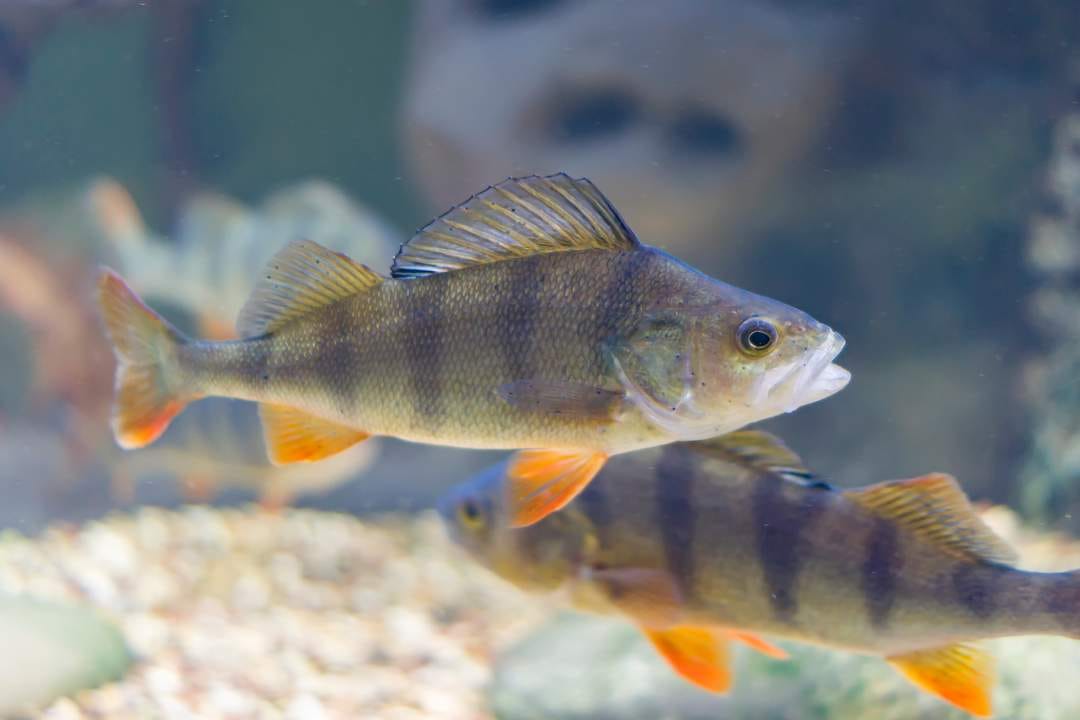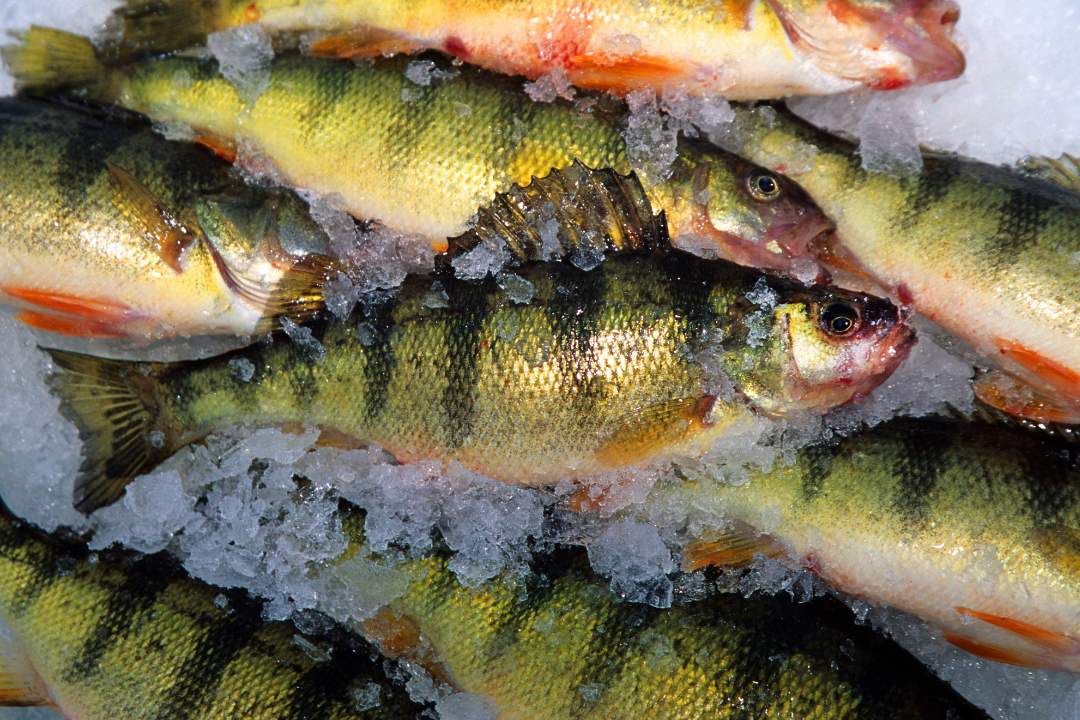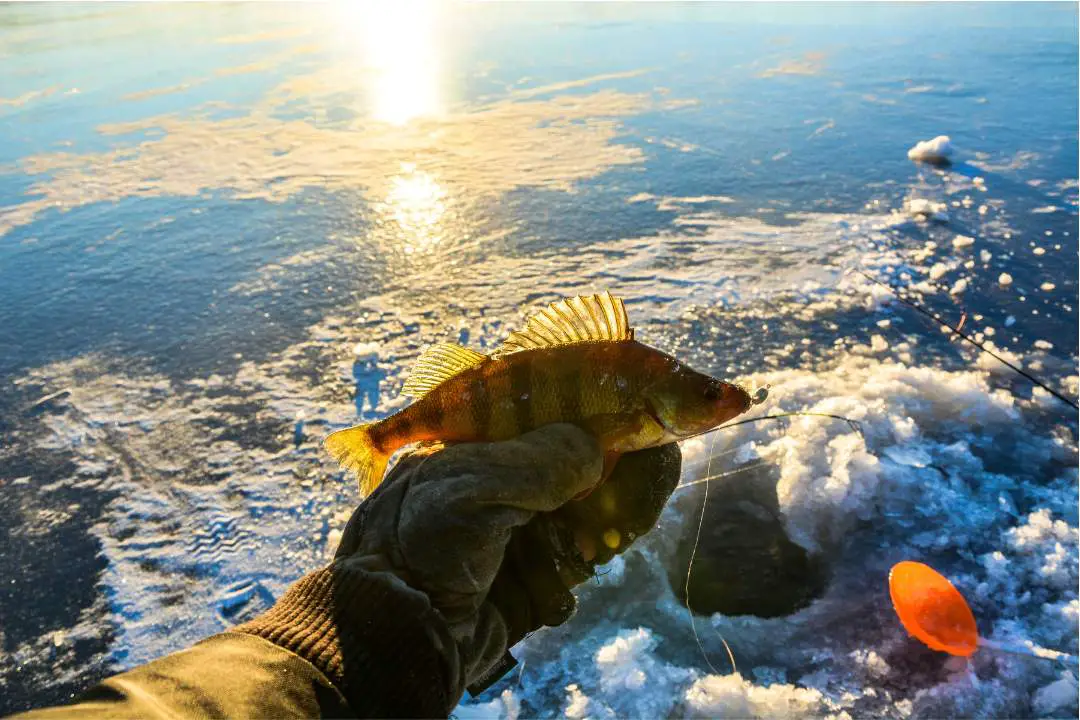Beginner Friendly Tips for Ice Fishing Perch: Where to Find Them, When and How to Fish Them
Learn everything you need to know about ice fishing for perch, including where to find them, when and how to fish them, and what rigs to use. Plus, discover some of the best places for ice fishing perch in the USA.
Ice fishing for perch is an exhilarating winter activity that can yield delicious rewards. Yellow perch, known for their vibrant stripes and tasty flesh, are a popular target for ice fishermen across the frozen lakes of North America.
If you're new to the sport, this comprehensive guide will provide beginner-friendly tips to enhance your ice fishing experience.
Key Takeaways
→ Learn the basics of locating and targeting perch during the ice fishing season.
→ Understand the best times and techniques for catching perch on the ice.
→ Discover the most effective baits and rigs for ice fishing perch.

Best Place to Ice Fish Perch
Some of the best places for perch ice fishing are:
- Lake Erie, Ohio: This part of the Lake Erie coastline turns into one of the best ice fishing destinations in the country. You can expect delicious Walleye and Yellow Perch to be your primary targets. You can fish out of Port Clinton, Catawba Island, and Sandusky, or take an air taxi out to Put-in-Bay on South Bass Island.
- Lake Champlain, Vermont/New York: Some of the best places to ice fish for perch on Lake Champlain are South Bay and Keeler’s Bay on the Vermont side, Knight Point on the Vermont side, the mouth of the Winooski River on the Vermont side, Bulwagga Bay on the New York side, and Port Henry or the Champlain Bridge on the New York side.
- Lake St. Clair, Michigan/Ontario: This lake is an incredible fishery regardless of the season. It’s much smaller than the Great Lakes surrounding it, but the angling here is just as good, if not better. You can catch huge Perch, as well as Walleye, Pike, and Muskie.
- Lake Cascade, Idaho: This lake is known for producing trophy-sized Perch, some weighing over 2 pounds. It also holds Rainbow Trout, Coho Salmon, and Smallmouth Bass.
- Devil’s Lake, North Dakota: This lake is a popular destination for ice anglers looking for big Perch, Walleye, and Pike1. It’s also home to White Bass, Crappie, and Burbo.
- Higgins Lake, Michigan: This lake is one of Michigan's most scenic and clear lakes. It offers excellent opportunities for Perch, as well as Trout, Pike, and Smelt fishing.
These are some of the best places for fishing perches in winter where you will not have to return home empty-handed.
Locating Perch Beneath the Ice
Finding where the perch is is half the battle when it comes to ice fishing. To locate perches for ice fishing, you need to understand their behavior and habitat preferences during the winter months. Perch tend to school up tightly and move around in search of food. They can be found in various depths and locations, depending on the lake conditions and the time of the season.
- Early ice season: Perch are usually more active and aggressive in the first month of fishable ice. A good perch hotspot early season will be shallow bay areas, where they feed on insects and minnows among the weedy bottom. Look for any green vegetation or weed beds that can attract perch. You can also drill several holes along the edge of the weed line, where perch may ambush their prey.
- Mid-winter: Perches become more sluggish and selective as the winter progresses. They tend to move to deep water levels, holding on points, drop-offs, flats, or reefs. Look for irregular features on the lake map that can provide structure and cover for perch. You can also use a fish finder or a flasher to locate schools of perch suspended in the water column.
- Late ice season: Perch starts to prepare for spawning as the ice melts. They migrate back to shallow water, where they can find warmer temperatures and more oxygen. Look for areas with gravel, sand, or mud bottom that can serve as potential spawning grounds for perch. You can also follow the melting ice edge, where perch may congregate to feed on emerging insects and worms.
However, each lake may have its own unique characteristics and patterns that affect perch behavior and location. You can talk to local anglers, bait shops, or guides for insider ice fishing tips and advice.
Using a fish finder can be a game-changer in locating schools of perch. Look for areas with underwater structures or changes in the bottom contour, as these are likely places where perch will congregate. Remember, perch love areas rich in food sources like insects and minnows, so watch for signs of feeding perch.

Timing is Everything
The best time for ice fishing perch is typically during the early morning or late afternoon when they are most active. This is when perch go into a feeding frenzy, searching for food before the quiet of the night or after a cold night's rest. Don't overlook the season's first and last ice, as these periods can offer excellent opportunities for catching jumbo perch.
Perch behavior can vary depending on the weather conditions. During periods of stable cold weather, perch may be more active and willing to bite. Conversely, a sudden drop in temperature can make them lethargic. Pay attention to the weather patterns and adjust your fishing times accordingly.
The Right Gear for Perch Fishing on Ice
Choosing the right rod and reel setup is crucial for ice fishing for perch. A light to medium-light rod with a sensitive tip will help you detect the often subtle bite of a perch. Pair this with a reel that has a smooth drag system to handle the fight of a big perch.
The fishing line is another important consideration. A thin diameter line is less visible to the fish and can improve your chances of a bite. However, it should still be strong enough to withstand the sharp teeth of perch. Many ice fishermen prefer fluorocarbon lines for their low visibility and abrasion resistance.
Bait and Lures: Attracting Perch Under Ice
The best way to fish perch is to match your presentation and technique to their mood and behavior. When perch are active and aggressive, you can use flashy and noisy lures, such as small spoons, jigs, or rattles, and jig them aggressively to attract and trigger perch. You can also tip your lures with live or artificial baits, such as spikes, waxies, minnows, or plastics, to add scent and taste to your presentation.
When perch are sluggish and selective and reside in the deeper water, you need to use more subtle and finesse lures, such as tungsten jigs, perch flies, or soft plastics, and jig them gently to entice perch. You can also use live bait rigs, such as slip bobbers, dropper rigs, or perch pounders, and suspend them below your hole or near the bottom, where perch can see and smell them. You need to be patient and watch your rod tip or your electronics for any signs of a bite, as perch may only nibble or suck on your bait.
Color can also play a significant role in attracting perch. Experiment with different colors to see what the perch in your area respond to best. Sometimes, a change in color can turn a slow day into a successful one.
Techniques & Rigs to Use
Jigging is a popular and effective technique for ice fishing perch. The key is to mimic the movement of prey to entice a bite. Start with small, subtle movements and vary your jigging pattern until you find what works. Pay close attention to your rod tip for any signs of a bite, as perch can be quite finicky.
A perch rig can also present multiple baits at different depths. This can be particularly useful when trying to locate a perch in the water column or when targeting a suspended perch.
Some of the most effective and popular rigs are:
- Tungsten jig tipped with bait: This is the simplest and most versatile rig, as it can be used in any depth and mood. A tungsten jig is heavier and smaller than a lead jig, which makes it sink faster and more sensitive to bites. You can tip it with spikes, waxies, minnows, or plastics, depending on what the perch are feeding on. You can also experiment with different colors and sizes, to see what works best. To use this rig, you must jig it up and down, with varying speed and intensity, to find the best jigging cadence that triggers the perch to bite.
- Slip bobber rig: This is one of the best live bait rigs for perch ice fishing, allowing you to suspend your bait at any depth and adjust it easily. A slip bobber rig consists of a bobber stopper, a plastic bead, a slip bobber, a split shot weight, a swivel, and a hook. You can use a small to medium minnow, a worm, or a maggot as your bait. To use this rig, you must set your bobber stopper at the desired depth and lower your rig down the hole. You can either let it sit still or give it a slight twitch or shake it occasionally to make your bait move and attract perch.
- Dropper rig: This combines a jig and a hook, connected by a short line. A dropper rig allows you to present two baits simultaneously, and target perch at different levels. You can use a small spoon, a jig, or a rattle as your main lure, and tip it with a minnow, a worm, or a maggot. You can also use a plain hook, a perch fly, or a small jig as your dropper hook, and tip it with the same or a different bait. To use this rig, you must jig your main lure up and down, and let your dropper hook hang below it. You can also jig your dropper hook slightly, to make it more appealing to perch.
- Perch pounder rig: This is a variation of the dropper rig, where you use two hooks instead of one, and connect them by a longer line. A perch pounder rig allows you to present more baits simultaneously, and create more attraction and action in the water. You can use two plain hooks, two perch flies, two small jigs, or a combination of them, and tip them with minnows, worms, maggots, or plastics. To use this rig, you need to jig it up and down and make it bounce and swing in the water to mimic a school of baitfish and trigger perch to bite.
- Perch fly rig: This is a simple and effective rig for perch ice fishing, especially when they are finicky and selective. A perch fly rig consists of a small and colorful fly, such as a nymph, a scud, or a streamer, tied to a light fishing line. You can use a single or tandem fly, where you tie two flies to the same line with a few inches of space between them. You can also add a small split shot weight above the fly, to help it sink faster and deeper. To use this rig, you need to jig it gently and slowly and make it flutter and wiggle in the water, to imitate a natural insect or a minnow and entice perch to bite.
These are some of the best rigs for perch ice fishing used by any avid angler. Of course, you can also mix and match different lures, baits, and techniques, to find what works best for you. The key is to be flexible and adaptable, and to experiment with different options until you find the winning combination.
Drilling Holes: The Strategy
Drilling holes is not just about access to the water; it's about strategy. Drill multiple holes in a grid pattern to cover a large portion of the potential perch territory. This allows you to move quickly from hole to hole, targeting active fish without wasting time.
Remember to space your holes appropriately. Too close, and you might spook the fish; too far apart, and you might miss a school of perch passing by. Avid anglers often start with a wider grid and narrow it down as they begin to locate perch.
Safety First on the Frozen Lake
Safety should always be a top priority when ice fishing. Ensure the ice is thick enough to support your weight before venturing out. A general rule of thumb is that four inches of solid ice is the minimum for safe fishing on foot.
Bring along safety gear such as ice picks, a throw rope, and a personal flotation device. Let someone know where you'll be fishing and when you plan to return. It's also wise to fish with a buddy, especially if you're new to the sport.
The Role of Electronics in Ice Fishing
Modern electronics like fish finders and GPS units can significantly enhance your ice fishing experience. They help you locate perch, understand the structure of the lake bottom, and even track the movements of schools of fish.
While not essential, investing in a good quality fish finder can save you time and increase your chances of a successful day on the ice. Just be sure to learn how to use it effectively before heading out.
Handling and Conservation
Once you've caught your perch, handling them properly is important for both conservation and table fare quality. If you plan to release a perch, do so gently and quickly to minimize stress on the fish.
For those you intend to keep, ice them immediately to preserve their freshness. Perch are renowned for their taste, and proper handling will ensure they make for a delicious meal.
FAQ Section
What is the best bait for perch ice fishing?
The best bait for perch ice fishing will vary depending on the ice season. Usually, live baits like wax worms, minnows, and night crawlers are highly effective for perch. Artificial lures, such as small spoons and jigs, can also be very successful.
How do I know where to drill holes for perch fishing?
Start by drilling holes in areas with underwater structures or changes in bottom contour. Use a fish finder to locate schools of perch and drill holes in a grid pattern to cover more area.
What is the best time of day for perch ice fishing?
Early morning and late afternoon are typically the best times to target perch, as they are most active during these periods. However, the first and last ice of the season can also provide excellent opportunities.
Wrapping Up
Ice fishing for perch is a fun and rewarding winter activity that requires a mix of skill, patience, and knowledge.
By understanding where to find perch, when to fish for them, and how to use the right baits and techniques, even beginners can enjoy success on the ice.
Remember to prioritize safety, respect the environment, and savor the fishing experience in the serene winter landscape.


